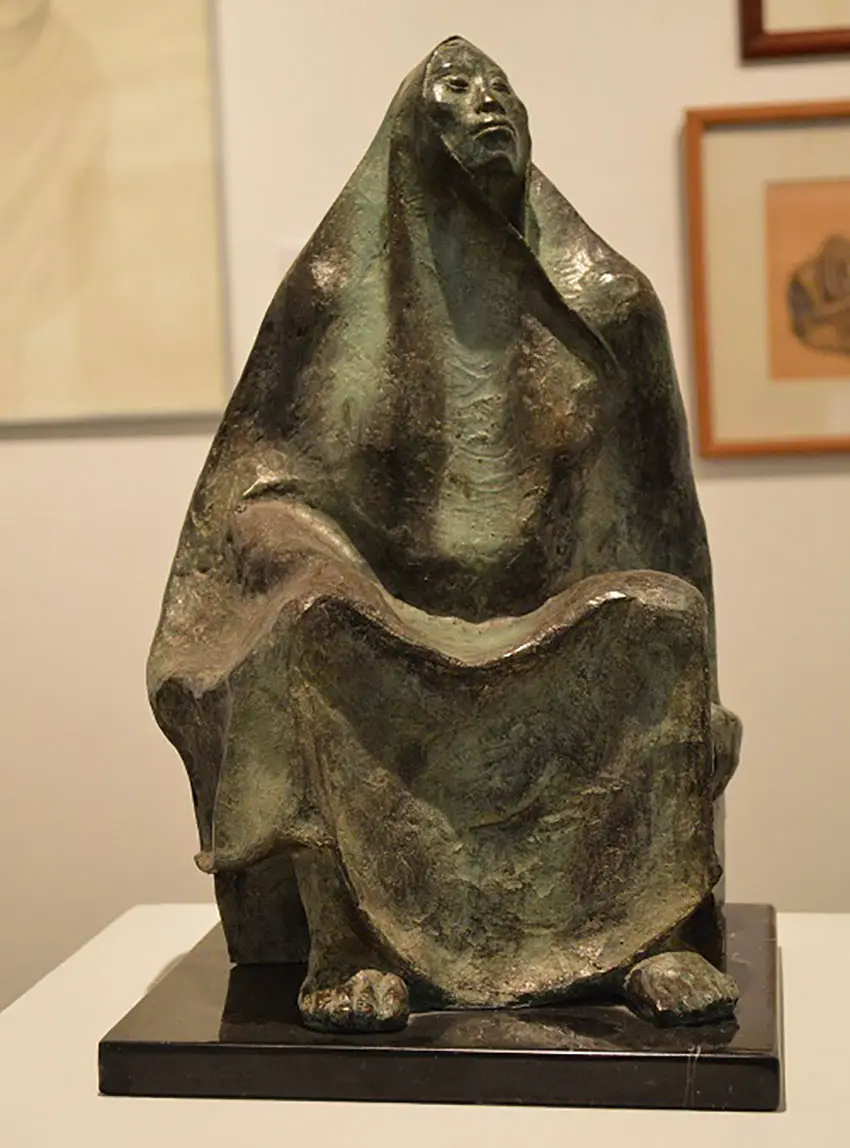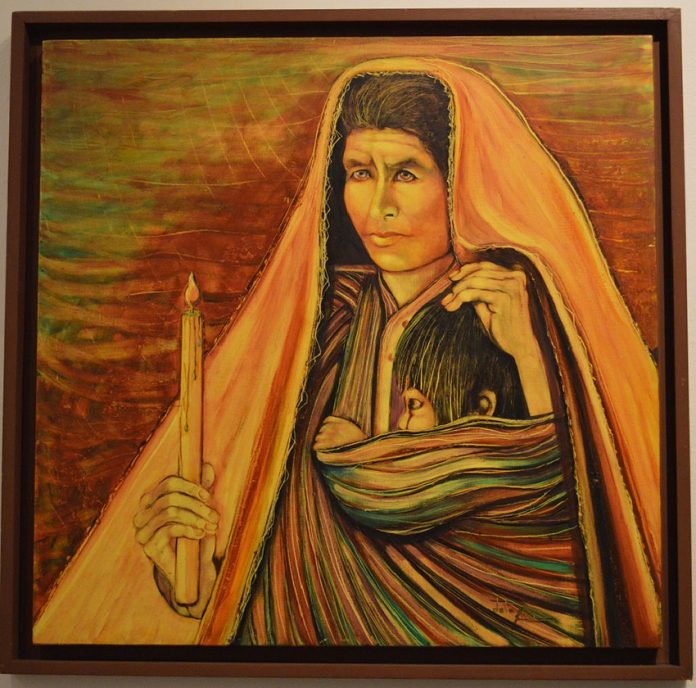Indigenous Mexican women are the focus of a new exhibition at the Salon of Mexican Fine Art (Salón de la Plástica Mexicana) in Mexico City, this year’s edition of an annual program in honor of International Women’s Day, celebrated next Sunday.
An exhibition honoring women — Mexican women in particular — has been held at the institution each year since 2005. According to board member Helen Bickham, “… even though it is much, much better, this society is still not entirely favorable to women or to their achievements. So, we are trying again to break the barriers that still exist to what women do.”
The focus of the show varies slightly from year to year. This time, it is on women in rural and traditional communities, mostly of indigenous origin, but not necessarily limited to them.
“Mujeres de los pueblos originarios” (Women of Indigenous/Traditional Communities) comprises 36 pieces, including drawings, graphic works, sculpture, painting and photography.
Dating from the mid-20th century to the present, the works correspond to dominant art styles in Mexico over the past 70 years.

There are rarely seen preliminary mural sketches as well as photographs of artists working with women. Both male and female artists are represented but the focus is on the reality of traditional life, both good and bad.
Featured works include Mujer con tocado (Woman with headdress) by Raúl Anguiano, Mujer con rebozo negro (Woman in black shawl) by Concepción Báez, Tres generaciones (Three generations) by Federico Cantú and Bronce (Bronze) by Francisco Zúñiga.
The collection represents women from Chiapas, Hidalgo, Veracruz and other states, embracing such ethnicities as the Tzetzals, Tehuanas and Jarochas (Veracruz mestizo).
Women are depicted as mothers, protectors, workers, fighters and sufferers, with elements from traditional societies, particularly dress.
The show “… is a tribute to our identity through the features that define the women of the different regions of our country,” stated gallery director Cecilia Santacruz at the inauguration.
This year’s exhibit is part of the Equitativa program, dedicated to promoting gender equality and denouncing gender-specific violence and sponsored by the federal Secretariat of Culture. Launched in November 2019, it is the brainchild of artist and cultural activist Lorena Wolffer.

The Salon took the opportunity of International Women’s Day to reopen another exhibition that was interrupted three years ago by the Puebla earthquake. Umbral, by photojournalist and Salon member Blanca Charolet, features a series of 15 black-and-white photographs that explore the “… space between the need to make a decision and the making of it.”
Charolet was the first woman photojournalist to work for a Mexican daily newspaper as well as the official photographer for the office of the president from 1977 to 1982.
Mexico News Daily
